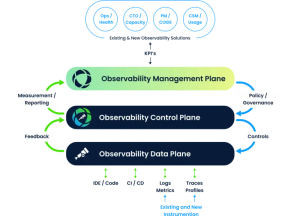A New Twist on Storage Virtualization
Virtualization is hot. Ask anyone. It’s hot, but put the word "storage" in front of "virtualization" and the air goes out of the balloon, the soufflé sags, or, in other words, the joke falls flat.
The answer lies in a complete mismatch of user expectations from a word that means something completely different for servers and storage systems. Users get excited about the word ![]() “virtualization,” because they associate it with immediate, tangible benefits. Server virtualization has the sort of immediate impact that almost sounds too good to be true until you catch up on Moore’s Law. It eliminates hardware, consolidates rackspace, conserves power and cooling, adds load balancing, and gets better as Intel CPUs advance. It’s the sort of better, faster, cheaper message that IT users have grown to depend on – the ultimate pain pill for what ails IT in an economic crunch.
“virtualization,” because they associate it with immediate, tangible benefits. Server virtualization has the sort of immediate impact that almost sounds too good to be true until you catch up on Moore’s Law. It eliminates hardware, consolidates rackspace, conserves power and cooling, adds load balancing, and gets better as Intel CPUs advance. It’s the sort of better, faster, cheaper message that IT users have grown to depend on – the ultimate pain pill for what ails IT in an economic crunch.
Storage virtualization is, by comparison, a yawner. It’s a multi-vitamin next to the server virtualization morphine drip. The abstraction of physical components is no less real, but the economic benefit is a secondary management effect, described in terms like simple ![]() scalability, automatic load balancing, and dynamic provisioning. It’s no wonder that the storage virtualization story has a less enthusiastic following. Easy-to-use without the better, faster, cheaper story is a much tougher sell.
scalability, automatic load balancing, and dynamic provisioning. It’s no wonder that the storage virtualization story has a less enthusiastic following. Easy-to-use without the better, faster, cheaper story is a much tougher sell.
What’s needed is a storage solution that combines both server and storage virtualization in a single product. This requires a re-architecture of storage using a scale-out model of x86-powered storage appliances that can incorporate server virtualization. This is what we’ve done at Pivot3 where a storage array has, for the first time, integrated server virtualization technology. The results are everything you’d expect. Vitamin and pain pill brought together.
A message from John Furrier, co-founder of SiliconANGLE:
Your vote of support is important to us and it helps us keep the content FREE.
One click below supports our mission to provide free, deep, and relevant content.
Join our community on YouTube
Join the community that includes more than 15,000 #CubeAlumni experts, including Amazon.com CEO Andy Jassy, Dell Technologies founder and CEO Michael Dell, Intel CEO Pat Gelsinger, and many more luminaries and experts.
THANK YOU













